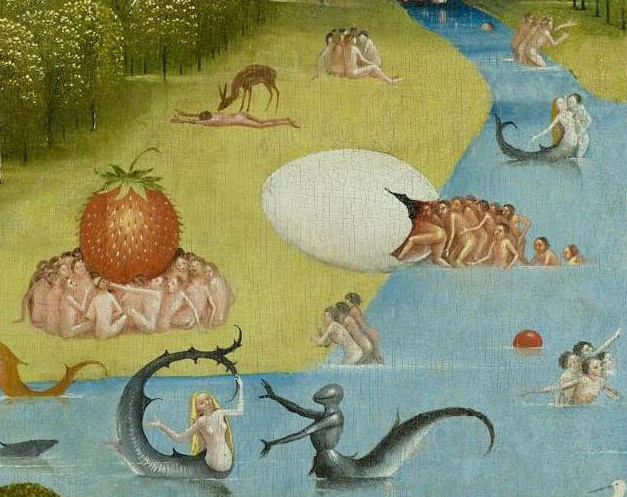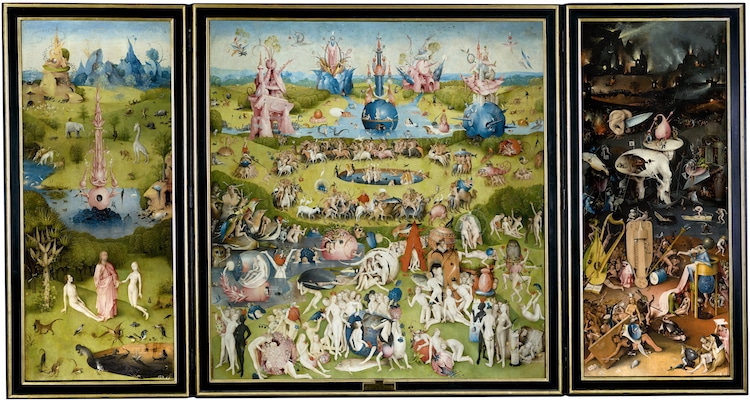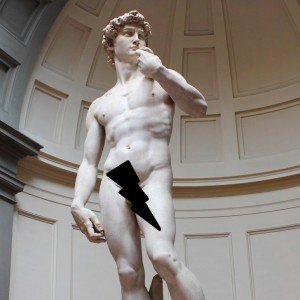Have you ever seen the outer shutters?
It is hard to believe The Garden of Earthly Delights by Hieronymus Bosch, was created over 500 years ago. It is a depiction of a fantastically surreal world, that present to the viewer scenes of terrifying horror as well as orgiastic pleasure. All in one triptych.
Even now, in the information age, much remain veiled in shadows. Both about the artist, and his most known creation. Only a few facts were gathered about Bosch as the man left no diaries, logs or records behind.
Today, we will take a closer look, at his most famous painting, The Garden of Earthly Delights, and present you with 13 little-known facts about him and his magnum opus.
Suprisingly Little is Known About the Influential Artist

That includes his birthday, level of education and who honored him with his patronage.
He Didn’t Date his Paintings

Art historians, at best, can make estimations. Taking under consideration factors like the age of the wood panels, historical events, etc.
The Garden Is Larger than Most Think

It is actually over 7 feet tall and almost 13 feet long.
Oil Paint Was Still A New Medium When the Garden Was Painted

Flemish artist Jan Van Eyck created the technique around 1410.
Bosch’s Magnum Opus Was Possibly an Immediate Hit

It was displayed at the town palace o the Counts of the House of Nassau. That was a most prominent location in Brussels, where heads of state and important figures visited.
We Don’t Know Who Commissioned It

It is almost certain that it wasn’t the church itself… At best, it must have been a lay patron.
The Name “The Garden of Earthly Delights” Is The Triptych’s Modern Name

In actuality, the name above was not the name given to the entire piece, just to the central one.
There Is A Specific Way to Read the Piece

It was most likely meant to be read from left to right, like a book.
The Outer Shutters

The outer shutters of the triptych, depict the world, in stunning detail.
The Artist May Have Included Himself, in his Painting

Hans Belting, art historian, first proposed this theory.
It Was Known as “The Strawberry Painting”

In the 17th century, it was often described as “The Strawberry Painting” due to the proment strawberry tree in the central panel.
It is Housed in the Prado Museum Because of the Spanish Civil War

It was moved from the Escorial, by the government for safe keeping during the Spanish Civil War, and has since remained there.









